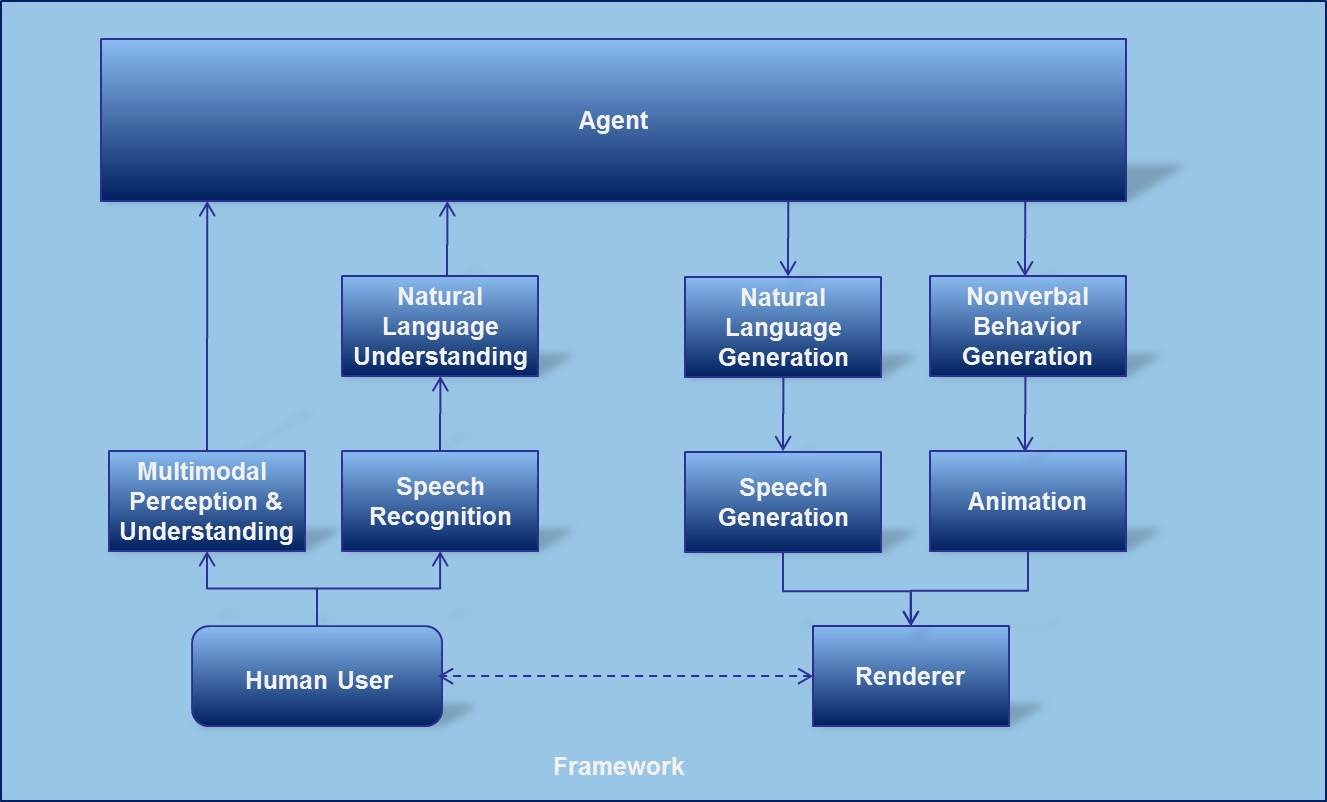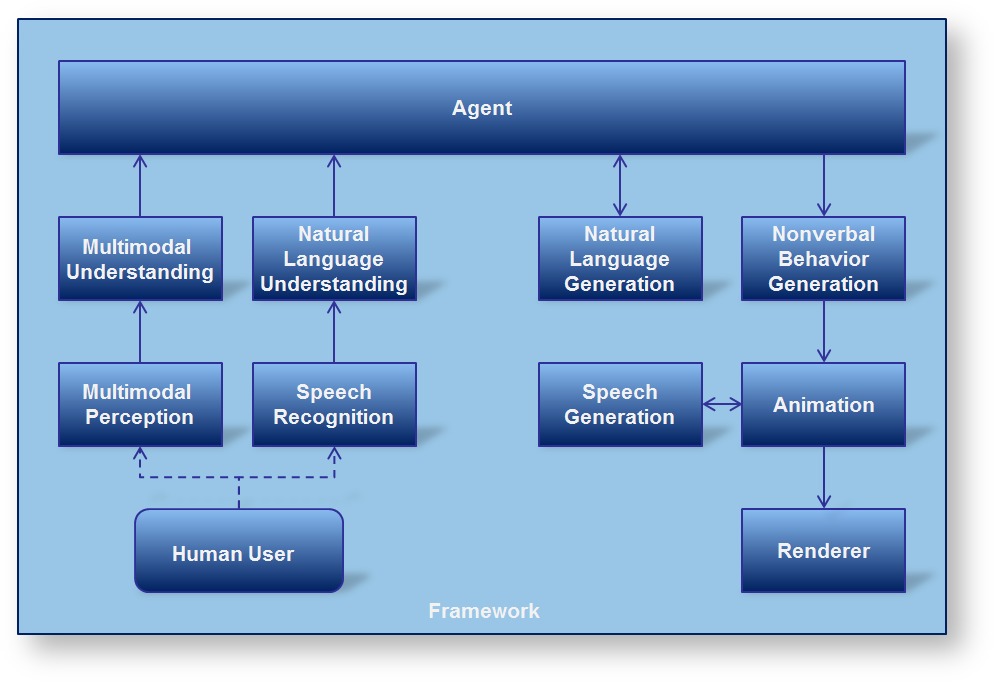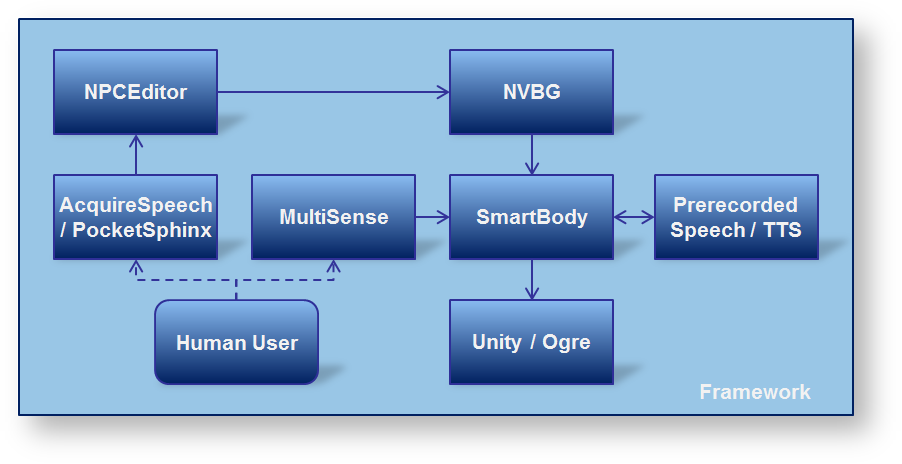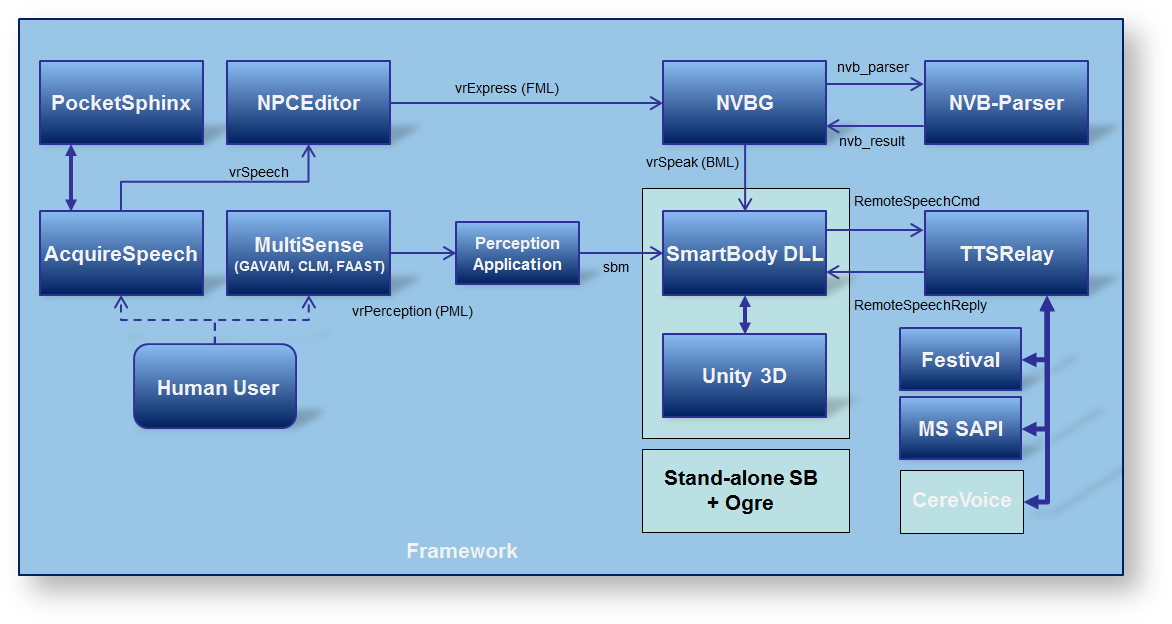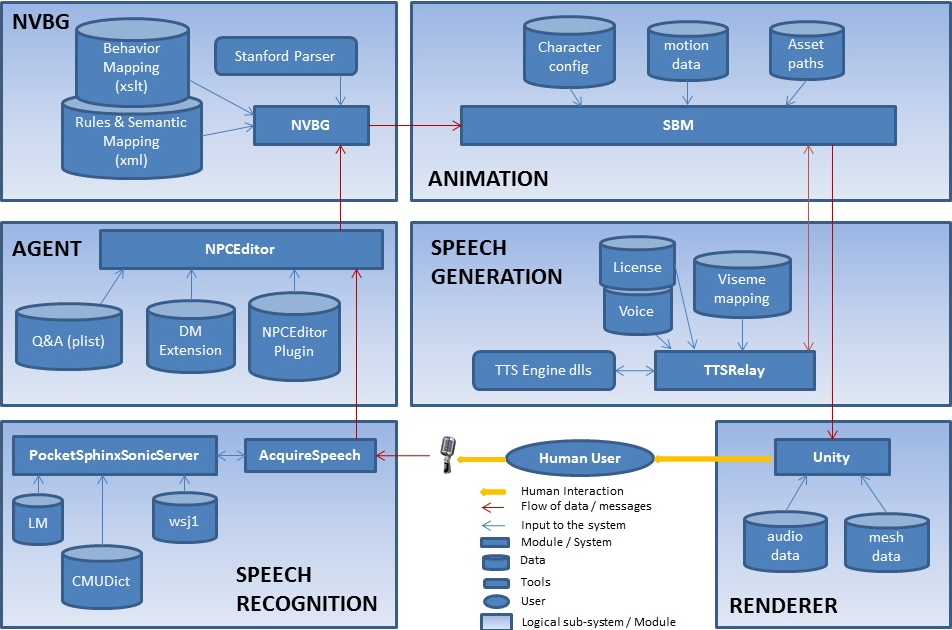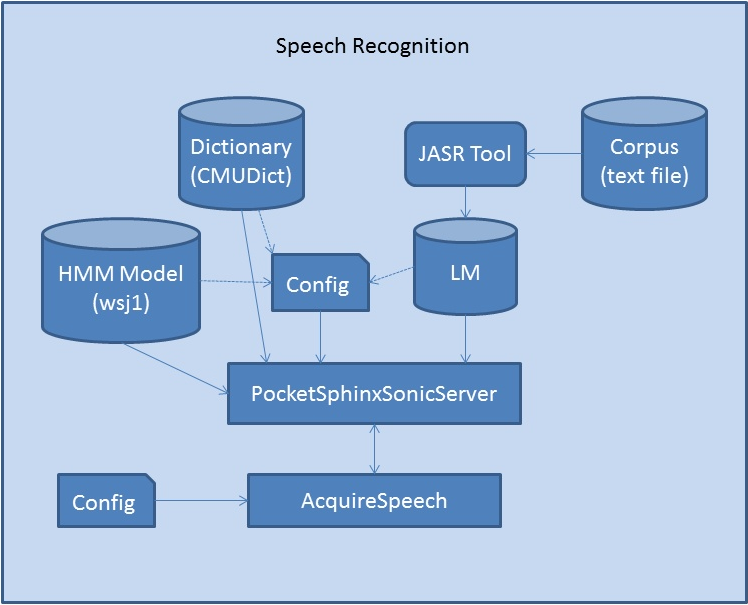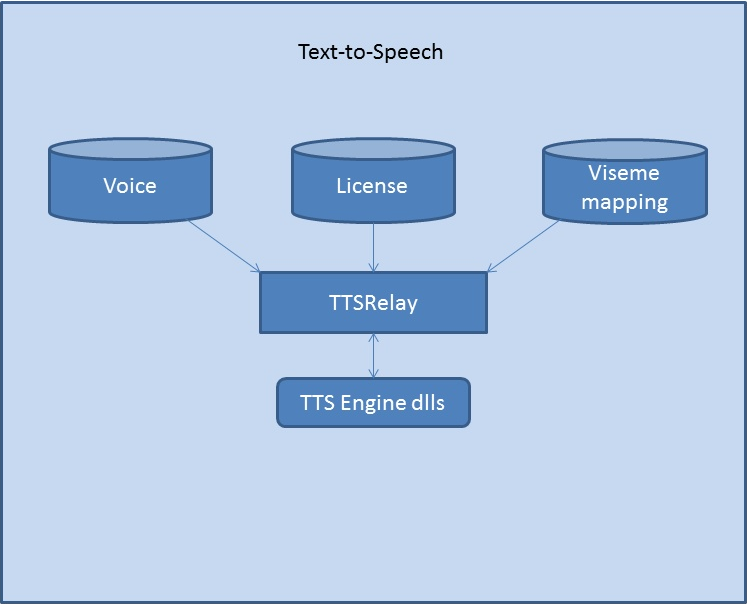Page History
...
The Virtual Human Toolkit is based on the ICT Virtual Human Architecture. This architecture defines at an abstract level what modules are needed to realize a virtual human, and how these modules interact. The basic functionality of each module as well as its interface is well-defined, but its actual implementation falls outside the scope of the architecture. The architecture dictates the implementation of a distributed system where communication is mostly realized using message passing. This allows for multiple implementations of a certain module and simple substitution of one implementation for another during runtimerun-time. It also allows for distributed systems, where different modules run on separate computers.
...
Please see below for a high level Virtual Human Architecture.
Figure 1. The ICT Virtual Human Architecture.
Virtual Human Toolkit Implementation
The Virtual Human Toolkit is a set of components (modules, tools and libraries) that implements one possible version instantiation of the Virtual Human Architecture. It has the following main modules:
...
For a complete overview of all the modules, tools and libraries, please see the Components section.
The figure below shows how all modules interact along with the messages used to communicate with each other.
Figure 2. The Virtual Human Toolkit architecture.
Virtual Human Messaging
Communication between most modules happens by message passing, which is implemented in ActiveMQ. Messages are broadcasted through the system and a component can subscribe to certain messages. Developers can use the VH Messaging library (VHMsg) to quickly implement receiving and sending ActiveMQ messages in a variety of languages, including C++, C# and Java.
Every module has its own messaging API. In addition, each module should at least implement the basic messaging protocol that allows modules to request and share whether they are online:
- vrAllCall [reason], pings all modules.
- vrComponent component-idsub, response by module to 'vrAllCall'; should also be sent on start-up by module.
- vrKillComponent {component-id|all}, requests a single module or all modules to shut down.
- vrProcEnd component-idsub, sent by module on exit.
a high level overview of the Toolkit modules. Instead of a full-fledged agent, the NPCEditor is handling all verbal in- and outputs. Note that since MultiSense (perception) is currently included as a basic proof-of-concept, it is directly communicating to SmartBody. A deeper integration with the system would require MultiSense to communicate with the NPCEditor, a dialogue manager and/or the NVBG instead.
A more detailed overview is depicted below. The bold arrows indicate a direct link between modules, either TCP/IP or included DLL. All other links show what messages are passing between modules; see Virtual Human Messaging for more details.
Data Models
Virtual Human Toolkit:
Individual modules:
Individual messages are listed under the Messages page.
